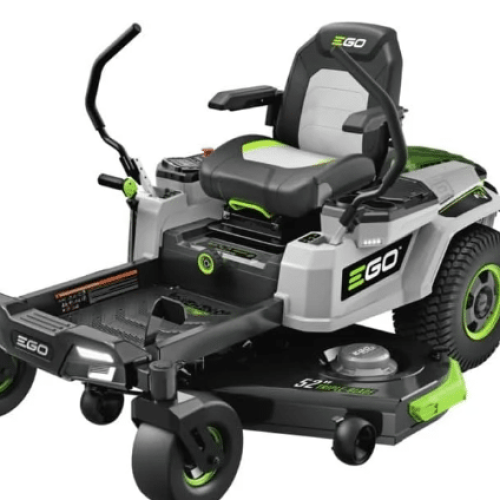Hey its JV Charles. Exploring the world of food, we find ourselves drawn to the bright colors, rich flavors, and health perks of microgreens and sprouts. These small, packed-with-nutrients plants are key in fancy restaurants and kitchens everywhere. Many of us wonder what makes them special. Knowing the differences between microgreens and sprouts is important, whether you’re a pro chef, a health-focused food lover, or just looking to improve your cooking skills.
Key Takeaways
- Microgreens and sprouts are both young, edible plants, but they differ in their growth stages, harvest times, and nutritional profiles.
- Microgreens typically take 1-3 weeks to grow, while sprouts can be harvested in just 4-6 days. Super quivk!
- Microgreens are reported to be more concentrated in vitamins, minerals, and antioxidants compared to their mature counterparts.
- Sprouts have been associated with more foodborne illness outbreaks, while microgreens are less prone to such issues.
- Microgreens offer a wider variety of flavors and textures, ranging from mild to strong, earthy, spicy, tangy, and sweet.
Understanding Microgreens & Sprouts
Microgreens and sprouts are both packed with nutrients and add flavor to dishes. They may look similar, but they are different in many ways. Let’s explore these differences. You might be suprised.
Defining Microgreens and Sprouts
Microgreens are young vegetables or herbs, harvested when their leaves are fully grown. They are between 2-7 inches tall and ready in 5-25 days. Sprouts, on the other hand, are seed shoots grown in water. They are harvested early, before their leaves fully develop, in just 3-5 days.
Are Sprouting Seeds and Microgreen Seeds The Same?
Yes, sprouting seeds and microgreen seeds are the same type of seeds. The difference is in how long they are grown. Sprouts are harvested quickly, offering a crunchy texture and mild taste. Microgreens are grown longer, becoming small, colorful plants with a richer flavor and more nutrients. So yummy!
Microgreens are usually picked in 1-2 weeks, while sprouts are ready in 4-6 days. Microgreens have more nutrients and fiber than sprouts. Sprouts have fewer nutrients but are easier to store.
Microgreens can last up to three days in the fridge, and sprouts can last a week. There are more varieties of microgreens than sprouts.
In summary, sprouting seeds and microgreen seeds are the same, but they differ in how they are grown and what they become. Knowing these differences helps you choose the best for your meals.
Growth Stages and Harvesting Times
Sprouts grow super fast, taking only 3-5 days to be ready. Microgreens take a bit longer, from 5 to 25 days, depending on the type. This difference affects how we grow and harvest them.
Harvesting sprouts is easy – just take them out of the jar, rinse them, and eat. Microgreens need more care. You must use a sharp tool to cut them just above the soil to keep them clean.
A study in the Journal of Agricultural and Food Chemistry found microgreens have more vitamins and cancer-fighting compounds than mature greens. This shows how nutritious these tiny greens are.
At the University of Pennsylvania, researchers saw vitamin C levels in sprouts jump by up to 700% in 72 hours. This quick boost in nutrients makes sprouts great for health lovers. Can you believe just how great they are?
Choosing between microgreens and sprouts depends on your cooking and health goals. Knowing the differences helps you pick the best option for you.
Microgreens vs Sprouts: Flavor Profiles and Textures
Microgreens and sprouts bring unique flavors and textures to the table. They can make any dish better. Sprouts have mild, earthy tastes, while microgreens offer bold, pungent flavors.
Microgreen Flavors & Texture Profiles
Microgreens come in many flavors, from sweet pea shoots to zesty radish. They have a wide range of tastes, including mild, spicy, tangy, and even bitter. Their texture is also special, with a crunchy and juicy feel that adds to any dish.
Broccoli microgreens taste slightly bitter, while basil ones are fragrant and herbaceous. Sunflower microgreens are nutty and slightly sweet. This variety lets chefs and home cooks try different taste and texture mixes.
Sprout Flavors & Texture Profiles
Sprouts are milder than microgreens but still offer a great taste experience. They are crunchy and refreshing, with the whole seed, shoot, and root to eat. Alfalfa and mung bean sprouts taste earthy, while lentil or soybean ones are nuttier.
With many types of sprouts, like broccoli and radish, there’s a flavor for every dish. They add a delightful crunch and a touch of sweetness to salads, sandwiches, or stir-fries.
Both microgreens and sprouts are key in the kitchen. They bring complex flavors and textures that chefs and home cooks love. These ingredients make dishes look and taste amazing.
Nutritional Comparison: Microgreens vs Sprouts
Microgreens and sprouts are both packed with nutrients, each offering unique benefits. They share some similarities but have different nutritional profiles. Let’s dive into what makes them special.
Microgreens are picked early in their growth, keeping more vitamins, minerals, and antioxidants. They can have up to 40 times more nutrients than full-grown greens. These young greens are loaded with vitamins C and K, giving you a big nutritional boost.
Sprouts, on the other hand, are full of enzymes that help with digestion. They also have lots of polyphenols and L-ascorbic acid, making them a strong antioxidant food.
| Nutrient | Microgreens | Sprouts |
|---|---|---|
| Vitamins | Higher concentration of vitamins C and K | Moderate vitamin content |
| Minerals | Elevated mineral levels, including iron and calcium | Good source of minerals, particularly potassium and magnesium |
| Antioxidants | Rich in antioxidants, including carotenoids and chlorophylls | High in polyphenols and L-ascorbic acid, providing antioxidant benefits |
| Enzymes | Moderate enzyme content | Exceptional enzyme content, aiding in digestion |
Both microgreens and sprouts bring special nutritional benefits to the table. Choosing between them depends on your dietary needs and likes. Whether you want a big dose of vitamins or better digestion, adding these foods to your meals is tasty and healthy.
Growing Microgreens and Sprouts at Home
Growing Sprouts at Home
Growing sprouts at home is easy and rewarding. You just need a mason jar with a cheesecloth or mesh lid, and a hydroponic setup. Sprouts grow in 3-5 days and need rinsing to stop bacteria from growing. This makes them perfect for beginners.
To grow sprouts, put 1-2 tablespoons of small seeds or 1/4 – 1/2 cup of larger seeds in your jar. Cover with lukewarm water and soak for 2 to 12 hours, depending on the seed type. Seeds like chia, basil, and flax need special care, soaking in a clay or terracotta tray and getting water twice a day for 3-5 days.
After soaking, drain and rinse the seeds well. Then, put the jar in a dark, well-ventilated spot. Rinse the seeds 2-3 times a day. In a few days, you’ll have fresh, crunchy sprouts to add to your meals.
Growing Microgreens at Home
Growing microgreens takes a bit more time and effort than sprouts. But the results are worth it. They grow in 5 to 25 days, depending on the type, and need good air and light to grow well.
To grow microgreens, pick your seeds and prepare your growing tray. Fill the tray with a growing medium like soil or coconut coir, and spread the seeds out. Cover the seeds with more medium and water them lightly.
Put the tray in a sunny spot or under grow lights. Keep the soil moist by misting or watering it lightly every day. Microgreens will start to grow in a few days. When they’re 2-4 inches tall, they’re ready to be cut. Just use scissors to snip them at the soil line and enjoy their vibrant colors, crunchy texture, and tasty flavors.
Growing growing sprouts and growing microgreens at home is fun and rewarding. It lets you have a steady supply of nutrient-rich produce from your kitchen. With their quick growth and many uses, these tiny plants are a great choice for any home gardener or health-conscious cook.
microgreens vs sprouts
Microgreens and sprouts may look similar at first, but they are quite different. They have different growth stages, harvest times, flavors, and textures. Knowing these differences is key for cooking, gardening, and nutrition.
Sprouts are harvested soon after germination, while microgreens take 2-4 weeks to grow. This difference affects their look, taste, and nutrition.
| Characteristic | Microgreens | Sprouts |
|---|---|---|
| Harvest Time | 2-4 weeks after germination | Just a few days after germination |
| Flavor Profile | Bold, concentrated flavors similar to mature plants | Mild, “barely-there” flavor due to lack of chlorophyll |
| Texture | Tender, delicate leaves | Crisp, crunchy texture |
| Nutritional Content | High in carotenoids, chlorophylls, and organic acids | Rich in amino acids, pectins, and sugars |
| Antioxidant Capacity | Moderate | High due to polyphenols and L-ascorbic acid |
Sprouts are known for their health benefits, while microgreens are loved for their strong flavors and nutrients. Both are great for a healthy diet because they are low in calories and have a low glycemic index.
If you’re a gardener, chef, or health enthusiast, knowing about microgreens and sprouts can help you make better choices. You can use these superfoods in your cooking or daily meals.
Culinary Uses: Incorporating Microgreens and Sprouts
Microgreens and sprouts are now a big hit in the kitchen. They add flavor and nutrition to many dishes. Let’s see how we can use these tiny plants in our cooking.
Microgreens are great as garnishes. They add color and flavor to salads, sandwiches, soups, and more. They’re packed with nutrients, making them a top choice for health lovers and chefs.
Sprouts bring a crunchy texture and nutty taste to dishes. They’re perfect for salads, sandwiches, wraps, and even on avocado toast or eggs. Sprouts add a unique crunch and flavor to any meal.
Adding microgreens and sprouts to your cooking can really open up new possibilities. They make your dishes look and taste better. These tiny plants are a must-have for any kitchen.
Check out the versatility of microgreens and the unique traits of sprouts. Get creative in the kitchen with these nutritious and tasty ingredients.
“Microgreens and sprouts have become the darling of the culinary world, offering a vibrant and nutritious addition to any dish.”
Conclusion
We’ve looked into the differences between microgreens and sprouts. These tiny foods may look alike but have unique benefits. Microgreens bring vibrant colors, intense flavors, and lots of nutrients to any dish. Sprouts are crunchy and easy to grow at home.
Knowing how to grow, harvest, and understand the nutrition of these plants is key. Whether you like the deep flavors of microgreens or the simple taste of sprouts, both are great for a healthy diet.
Choosing between microgreens and sprouts depends on what you like and what your dish needs. By learning about each, we can add more flavor, texture, and nutrition to our meals. This can make our food better and help us stay healthy.
FAQ
What are the key differences between microgreens and sprouts?
Microgreens are young vegetables or herbs harvested when their leaves are fully grown. They are between 2-7 inches tall and 5-25 days old. Sprouts, however, are seed shoots grown in water and harvested early, before their leaves fully develop. They are usually ready in 3-5 days.
Are the seeds used for microgreens and sprouts the same?
Yes, the seeds for both microgreens and sprouts are the same. The difference lies in how they are grown. Sprouts are grown for a short time, giving them a crunchy texture and mild flavor. Microgreens, on the other hand, are grown longer, becoming small, flavorful plants rich in nutrients.
How do the growth and harvesting processes differ for microgreens and sprouts?
Sprouts grow very quickly, in just 3-5 days. Microgreens take longer, from 5 to 25 days to mature. Harvesting sprouts is simple, done by hand and rinsed afterwards. Microgreens need a sharp tool to cut them just above the soil line to avoid dirt.
How do the flavor profiles and textures of microgreens and sprouts compare?
Microgreens can taste mild, strong, earthy, spicy, tangy, tart, or sweet, depending on the plant type. They are tender and crunchy. Sprouts are milder in flavor but crunchy too, with the whole seed, shoot, and roots being edible.
How do the nutritional values of microgreens and sprouts differ?
Both are nutritious, but microgreens have more vitamins, minerals, and antioxidants than sprouts. They need these nutrients to grow to maturity. This makes microgreens more nutritious and flavorful.
What are the key considerations for growing microgreens and sprouts at home?
Sprouts are easy to grow in a mason jar with a cheesecloth lid, needing constant rinsing to prevent bacteria. Microgreens take more time and effort, growing in soil or other mediums. They need good air and light to grow well.
Source Links
- https://www.urbancultivator.net/microgreens-vs-sprouts/ – Microgreens and Sprouts Are Not the Same Thing – Urban Cultivator
- https://micropod.nz/blogs/news/sprouts-vs-microgreen – Sprouts vs Microgreens – what’s the difference and how can we grow them at home?
- https://www.microgreensilo.com/microgreens-vs-sprouts/ – Microgreens vs Sprouts • A Comprehensive Comparison 2023
- https://www.allthatgrows.in/blogs/posts/microgreens-vs-sprouts – Microgreens Vs Sprouts
- https://www.almanac.com/microgreens-vs-sprouts-lets-grow-both – Microgreens Vs. Sprouts? Let’s Grow Both!
- https://mpseeds.eu/epic-battle-of-sprouts-microgreens-comparison – A Hilarious Comparison! ▶︎ MP SEEDS
- https://wendypolisi.com/microgreens-and-sprouts/ – Microgreens and Sprouts: Your Ultimate Guide
- https://www.seedsnow.com/blogs/news/whats-the-difference-between-sprouts-and-microgreens – What’s the difference between Sprouts and Microgreens?
- https://smokymountainfarmhouse.com/microgreens-verses-sprouts/ – Microgreens vs. Sprouts – Smoky Mountain Farmhouse
- https://thewonderfulworldofsprouts.com/microgreens-vs-sprouts/ – Microgreens vs Sprouts: Understanding the Differences
- https://healthiersteps.com/microgreens-vs-sprouts-what-are-they/ – Microgreens vs Sprouts: What Are They? – Healthier Steps
- https://www.starwest-botanicals.com/blog/microgreens-vs-sprouts-whats-the-difference/ – Microgreens vs Sprouts: What’s the Difference?
- https://foodtolive.com/healthy-blog/microgreens-vs-sprouts-whats-the-difference/ – Microgreens vs Sprouts: What’s the Difference? – Healthy Blog
- https://www.ncbi.nlm.nih.gov/pmc/articles/PMC8877763/ – Sprouts and Microgreens—Novel Food Sources for Healthy Diets
- https://thenatureofhome.com/baby-greens-sprouts-vs-microgreens-differences-nutrition/ – Sprouts vs. Microgreens / Baby Greens (Differences + Nutrition)
- https://www.gooseberrygardens.ca/post/sprouts-shoots-and-microgreens – Sprouts, Shoots and Microgreens
- https://www.lovinglyplantbased.com/how-to-grow-sprouts-and-microgreens.html – How to grow sprouts and microgreens
- https://www.urbanrevolution.com.au/blogs/articles/best-seeds-for-sprouts-and-microgreens – Microgreen or Sprout? Best Methods for Different Seeds (and what they taste like)
- https://www.ncbi.nlm.nih.gov/pmc/articles/PMC7587365/ – Sprouts vs. Microgreens as Novel Functional Foods: Variation of Nutritional and Phytochemical Profiles and Their In vitro Bioactive Properties
- https://foodwise.org/articles/the-raw-truth-about-sprouts-and-microgreens/ – The Raw Truth about Sprouts and Microgreens
- https://farm.one/flavor/sprouts-vs-cress-vs-microgreens-vs-baby-greens-whats-the-difference – Sprouts vs. Cress vs. Microgreens vs. Baby Greens – What’s the Difference?
- https://microgreensworld.com/microgreens-vs-sprouts-unveiling-a-green-revolution/ – Microgreens vs Sprouts, Ali vs Frazier – No Contest! | Microgreens World
- https://ingarden.com/blogs/indoor-gardening/microgreens-vs-sprouts – Microgreens vs. Sprouts: Choosing the Right Greens for You
- https://www.smorescience.com/microgreens-vs-sprouts-whats-the-difference-and-why-it-matters/ – Microgreens Vs Sprouts: What’s The Difference And Why It Matters – Smore Science Magazine
- https://microgreensworld.com/pros-and-cons-of-microgreens/ – Pros and Cons of Microgreens | Microgreens World
- https://www.healthline.com/nutrition/microgreens – Microgreens: Health Benefits, Nutrition and How to Grow Them
- https://www.skyemountain.co.uk/microgreens-vs-sprouts-vs-baby-greens-whats-the-difference/ – Microgreens vs. Sprouts vs. Baby Greens: What’s the Difference? – Skye Mountain






